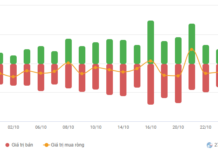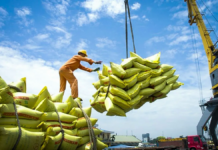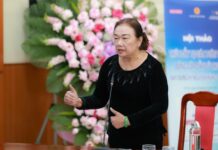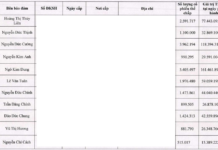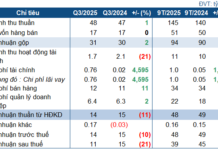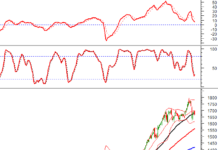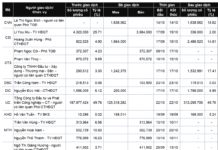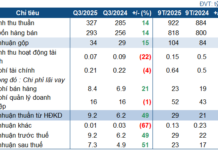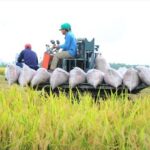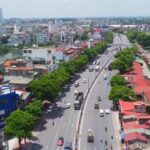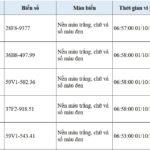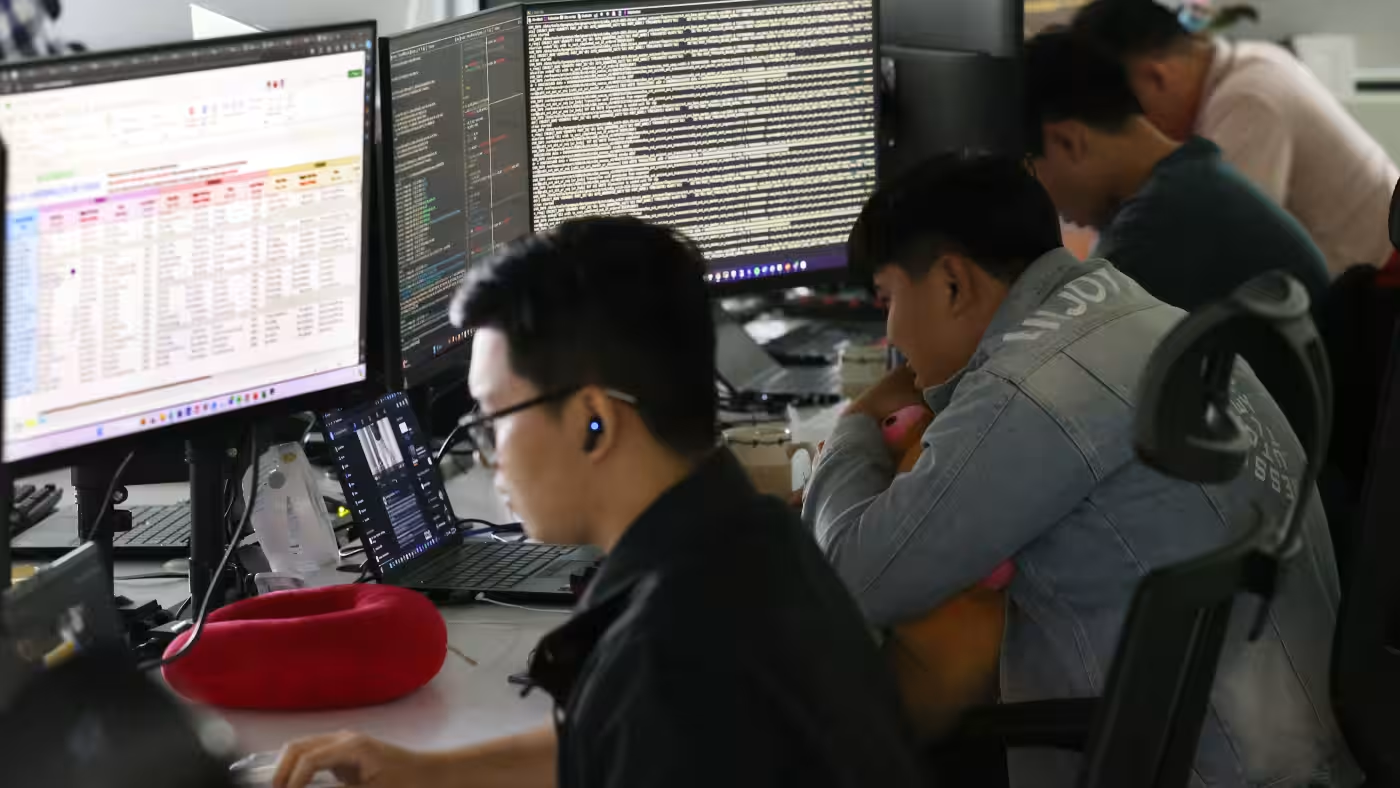(Prof. Ngo Tri Long, former Director of the Institute for Price and Market Research (Ministry of Finance), has an exclusive article for Tien Phong Newspaper regarding this issue)
Focusing on Developing the People’s Strength
The period of 2026-2030 marks an important milestone in the country’s socio-economic development journey. With the ambitious target of achieving a two-digit GDP growth rate, we not only face great opportunities but also have to overcome a series of complex challenges.
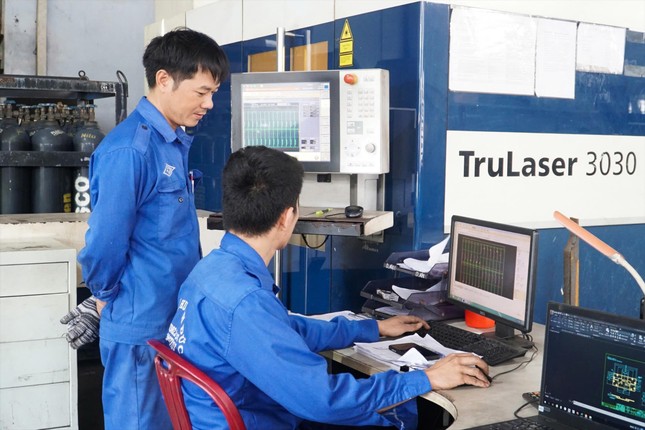
Enhancing capital mobilization through PPP and domestic resources has significantly contributed to economic growth. Photo: Nguyen Bang
The people’s strength lies not only in unity of will but also in the harmonious combination of economic, social, and cultural factors. Every individual, community, and organization plays a crucial role as a link in the country’s value chain. From small-scale local initiatives to nationwide policies, everything contributes to building a confident and robust Vietnam on the international stage.
So, how can we ensure that the people’s strength becomes a driving force for breakthroughs in this period? This question demands unity and innovative solutions from the government, businesses, and every citizen.
In the period of 2021-2025, Vietnam achieved significant accomplishments in technology, agriculture, and industry, making a substantial contribution to the country’s economic growth. The development of technology and the digital transformation boom, including e-government, online education, digital healthcare, and e-commerce, coupled with advancements in information technology infrastructure, particularly the widespread deployment of 5G networks, propelled Vietnam to become a regional spotlight for technology startups in Southeast Asia.
Economic growth, with the participation of the high-tech agriculture and smart agriculture “pillar,” organic production, and increased productivity, led to a significant boost in the export of key agricultural products (rice, coffee, fruits) alongside the rapid growth of the domestic processing and manufacturing industry.
Promoting economic development would not be possible without the contribution of administrative agencies in vigorously reforming administrative procedures, tax, and credit support to help businesses thrive.
Unblocking Obstacles
According to the World Bank, Vietnam’s Gini coefficient, which measures income inequality, stood at 35.7 in 2022. The top 10% of the richest have incomes more than ten times higher than the bottom 10%. The General Statistics Office’s 2023 report also showed that 70% of the workforce is in the informal sector, with low incomes and a lack of social insurance. Urban areas have an average income 1.8-2 times higher than rural areas, while the Northwest and Central Highlands have the highest poverty rates (over 30%). Income disparities and unequal access to social services are hindering sustainable development and reducing labor productivity. To vigorously promote double-digit growth, addressing income inequality is a challenge for the economy.
Relying on natural resources and a processing economy is another bottleneck that needs attention as Vietnam aims for double-digit growth. The export of raw materials and processed goods accounts for a large proportion of exports, with crude oil, electronics, and textiles and garments as key sectors. This situation poses a challenge to increase the value-added ratio in processing production (data from 2023 showed that the value-added ratio reached only 22%). Dependence on low-value exports makes Vietnam vulnerable to market fluctuations and faces difficulties in transitioning to high technology due to insufficient investment in research and development (R&D) and technical education.
To achieve the target of double-digit GDP growth in the 2026-2030 period, it is necessary to promote the people’s strength through unity, innovation, and community resource utilization. The key strategies to prioritize include: Promoting entrepreneurship, improving education quality, developing balanced infrastructure, and effective public-private cooperation.
Prof. Ngo Tri Long – Economic Expert
Not fully utilizing the potential of the young workforce is a concern in achieving double-digit growth. While the working-age population currently accounts for 68.9% (in 2023), the unemployment rate for young workers is 7.8%, higher than the national average. With 47% of young workers lacking skills or working in the wrong sector and only 24% having a college degree or higher, Vietnam faces a “low-skill trap,” low labor productivity, and a “brain drain.” Along with social inequality, resource dependence, and untapped potential of young workers, these will be significant barriers to Vietnam’s sustainable development.
A Strategy to Harness the People’s Strength is Needed
To achieve the target of double-digit growth in the 2026-2030 period, maximizing the potential of individuals and communities is crucial. The two main directions to focus on are promoting creativity and entrepreneurship and raising social awareness and responsibility. Accordingly, specific strategies are needed to boost creativity and entrepreneurship, as outlined in the proposed strategy: harnessing individual and community internal resources.
In particular, there should be a focus on introducing mechanisms and policies to promote creativity and entrepreneurship. Specifically, it is necessary to increase the startup investment fund from VND 5,000 billion (in 2025) to VND 10,000 billion (in 2030) and provide a 30%-50% tax exemption for the first three years for new enterprises. In parallel, develop 50 business incubators nationwide, universalize STEM education, and encourage participation in creative contests. Achieving 10,000 startup enterprises by 2030 and increasing the success rate from 10% to 30% are also key tasks to be implemented in the coming period.
Enhancing education and training to adapt to the digital age is also an essential task in the country’s economic development. Accordingly, Vietnam needs to focus on training human resources in information technology, AI, automation, and renewable energy and developing high-tech industries. Promoting digital education and advanced technical training will lay the foundation for Vietnam to adapt to global digital transformation, but it is necessary to improve training quality to meet long-term demands.
Strengthening public-private cooperation in Vietnam is also one of the critical tasks in boosting growth. As of 2025, Vietnam has more than 360 PPP projects with a total capital of 1.5 million billion VND, focusing on infrastructure, transportation, energy, and the environment. Notable projects include the North-South Expressway, which accounts for 70% of the total investment. However, the incomplete legal framework and lack of transparency in investor selection are issues that need to be addressed.
The government and ministries should provide guidance on mobilizing domestic enterprise resources in the coming time. Additionally, amending the PPP Law (investment in the form of public-private partnership), establishing an independent management agency, and applying blockchain technology for transparent bidding will be issues to focus on solving. According to calculations, when well implemented, PPP investment will increase by 15-20% per year, reaching 20-25% of GDP by 2030, saving the state budget more than 2 million billion VND, creating 2 million new jobs, upgrading the quality of life, and reducing carbon emissions.
Where does Vietnam stand in the value chain?
In his directive speech at the 6th National Forum on Vietnamese Digital Technology Enterprises, held on January 15, General Secretary To Lam pointed out that one of the significant weaknesses is that research and development capabilities still heavily depend on foreign resources, limiting Vietnam’s technological autonomy. Additionally, the ability to attract high-tech talent is not strong enough, leading to a shortage of quality human resources, directly impacting the innovation capacity of enterprises. The technological level of Vietnamese enterprises is generally low, and their participation in the global supply chain is very modest.
“I was informed that Vietnam ranks second in the world in smartphone exports, fifth in computer component exports, sixth in computer equipment exports, seventh in software outsourcing, and eighth in electronic components. These figures seem very impressive and grandiose, and we are proud, but have we ever looked deeply into the nature of these figures?” emphasized the General Secretary.
In reality, “Vietnam contributes how much to these export values or are we in the lowest segments of the value chain, mainly outsourcing for foreign countries? When we sell a shirt, others design it, and we provide the fabric, thread, button, and labor, and we bear the environmental pollution. These figures are quoted from the leaders’ reports on their sector’s achievements, but I wonder if this is a misunderstanding, self-hypnosis, or self-comfort,” said the General Secretary.
Thuc Quyen (recorded)
The Great Rice Rush: From World ‘Kings’ to Unlocking the Floodgates
The golden rice fields are ready for harvest, yet the crops remain standing in the fields as traders refuse to buy. Rice mills and processing plants are overwhelmed with stock, forced to clear their warehouses at discounted prices. This is an alarming situation for Vietnam’s rice industry, once considered a stronghold for the country’s agriculture.
The Trials of 2025: Unraveling the Scandals of the Phuoc Son, Thuan An, and Saigon – Dai Ninh Conglomerates
On December 31st, in Hanoi, the Central Steering Committee for Corruption, Waste, and Negative Behavior Prevention (the Committee) held its 27th meeting to discuss and evaluate the Committee’s performance in 2024 and outline its work program for 2025. The meeting also focused on the results of the Committee’s supervision and handling of cases and trials under its jurisdiction in 2024, along with other significant issues.

